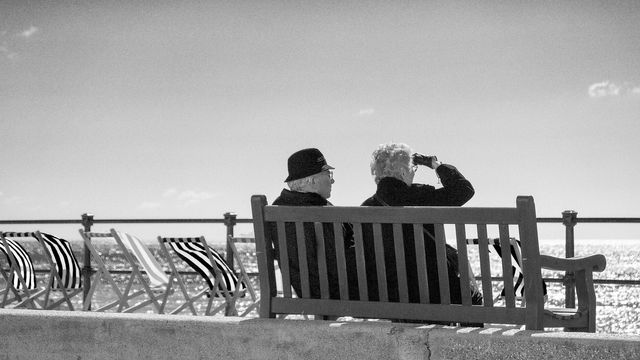2.2.4
De-Nazification Policies of Western Allies, 1945
Denazification of Germany
Denazification of Germany
The Allies agreed that Germany should be de-nazified. This process was very difficult and only a minority of Germans were punished.


Demilitarisation
Demilitarisation
- The German Army was disbanded following WW2.


The Nazi Party
The Nazi Party
- The Nazi Party was to be banned.
- The Allies tried to remove Nazis from positions of importance, such as in education and government.


Nazis in administrative positions
Nazis in administrative positions
- Despite the efforts to remove Nazis from key positions, they were actually the most qualified people for the roles.
- Clay (a US lieutenant general helping German reconstruction) noted that the ‘major administrative problem is to find reasonably competent Germans who had not been affiliated or associated in some way with the Nazi regime’.
- E.g. by 1951, 94% of judges and prosecutors in Bavaria were former Nazis.
- Neiman (2019) says that "what’s also never contested is the fact that the denazification imposed by the Allies in West Germany was a consummate failure". Most programs were abandoned in 1951.
- To rebuild Germany, Adenauer had to employ former Nazi Party members.
- Some sources suggest that half of the German FBI in 1966 were former SS members.


War criminals
War criminals
- War criminals were prosecuted (tried in court) at the Nuremberg Trials in August 1945.
- These trials served an important judicial function (to show that Nazi criminals would be punished) and an important pedagogical function (a lesson for others). Only a minority of Nazis were actually punished. But the point of the trials was to make an example of these few Nazis on a global platform.
- In East Germany, 12,890 Nazis were tried and found guilty. 129 were sentenced to death. In West Germany, 6,488 were tried and found guilty. None were executed. Because of the softer treatment of former Nazis in West Germany, many more are thought to have fled there.


Forgetting Nazism
Forgetting Nazism
- Historians such as Tony Judt have noted how the German people chose to forget their collusion with the Nazis. Instead, they presented themselves as victims of the Nazis.
- The Allies put up posters saying 'this is your fault'.
- 423 monuments to Nazi victims were erected in Berlin. 246 were in East Berlin and 177 were in West Berlin.
- The Stolperstein project, which began in 1992, installed 75,000 stone and brass plaques over the next 28 years, to commemorate victims of the Nazi regime at the places they had lived before Nazi persecution.


Success of denazification
Success of denazification
- Each zone pursued denazification in its own way.
- Britain and France focussed on rebuilding Germany and left many Nazis unpunished.
- The Soviet Union took advantage of denazification to install their own pro-communist officials into former Nazi positions.
- The United States wanted to severely punish all Nazis. However, this was impractical as it damaged Germany’s economy. The United States relaxed their policy and this led to economic improvements.
- A 1991 EMNID study found that 4% of East Germans had extreme anti-semitic tendencies vs 16% in West Germany.
1Political & Governmental Change, 1918-1989
1.1Creation & Collapse of Weimar, 1918-1932
1.2Nazi Dictatorship, 1933-1945
1.3Return to Democratic Government, 1945-1989
2Opposition, Control & Consent 1918-1989
2.1Opposition to Government, 1918-1989
2.2Controlling the People, 1918-1989
3Economic Developments & Policies, 1918-1989
3.1Reacting to Economic Challenges, 1918-1932
3.2Controlling the Economy, 1933-1945
3.3Creating the Social Market Economy, 1945-1989
4Aspects of Life, 1918-1989
4.1Attitudes Towards Women, 1918-1989
4.2Education & Cultural Developments, 1918-1989
5Historical Interpretations
5.1Influence of German History
5.2Hitler & Foreign Policy
5.3Contribution of Other Nations to WW2
5.4Reasons for Invading Poland
Jump to other topics
1Political & Governmental Change, 1918-1989
1.1Creation & Collapse of Weimar, 1918-1932
1.2Nazi Dictatorship, 1933-1945
1.3Return to Democratic Government, 1945-1989
2Opposition, Control & Consent 1918-1989
2.1Opposition to Government, 1918-1989
2.2Controlling the People, 1918-1989
3Economic Developments & Policies, 1918-1989
3.1Reacting to Economic Challenges, 1918-1932
3.2Controlling the Economy, 1933-1945
3.3Creating the Social Market Economy, 1945-1989
4Aspects of Life, 1918-1989
4.1Attitudes Towards Women, 1918-1989
4.2Education & Cultural Developments, 1918-1989
5Historical Interpretations
5.1Influence of German History
5.2Hitler & Foreign Policy
5.3Contribution of Other Nations to WW2
5.4Reasons for Invading Poland
Unlock your full potential with Seneca Premium
Unlimited access to 10,000+ open-ended exam questions
Mini-mock exams based on your study history
Unlock 800+ premium courses & e-books